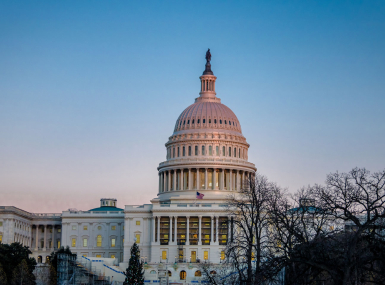State and local governments distribute $2.9 billion in emergency rental assistance to 665,000 households in November 2021
Author
Upcoming Events
Related News

Key Takeaways
According to data released by the U.S. Department of Treasury (Treasury) on January 7, state and local governments distributed $2.9 billion in Emergency Rental Assistance (ERA) program funds to 665,000 households in November 2021, an increase from the previous month. The ERA program provides direct funding to states and eligible units of local government, including counties with populations of over 200,000 residents to assist individuals and families struggling to make rental and utility payments due to the COVID-19 pandemic. Counties are working diligently at the local level to successfully implement the ERA program and keep our residents safely and stably housed through the pandemic and beyond.
The ERA program was established by the Consolidated Appropriations Act of 2021, which provided $25 billion for the first round of the program, known as ERA1. The American Rescue Plan Act (ARPA) provided $21.6 billion for an additional round of the program, known as ERA2, including $2.5 billion in targeted assistance to the highest need areas.
As of November 30, 2021, total ERA1 cumulative expenditures had reached approximately $15 billion, while total ERA2 cumulative expenditures had reached approximately $2.8 billion. However, based on the November data, Treasury expects that between $25 and $30 billion of combined ERA1 and ERA2 funds were spent or obligated before the end of last year.
The release of the November data also comes as Treasury announced the first round of reallocation of “excess” ERA1 funds, as required by the Consolidated Appropriations Act of 2021. While there will be multiple rounds of ERA1 reallocation, Treasury will disburse over $1.1 billion in ERA1 funds during this first round, 75 percent of which are significant, one-time voluntary transfers between ERA1 grantees located within the same state. Notably, counties received approximately $646 million in this first round of reallocation.
Treasury is currently in the process of educating grantees on how to request funding in the second round of ERA1 reallocations. The ERA2 reallocation will not begin until March 31, 2022.
NACo will continue to monitor and advocate for county priorities as the ERA program continues. For more information, please visit NACo’s ERA Resource Hub.
Advocacy
Treasury Department distributes $6.1 billion in APRA funding through Emergency Rental Assistance (ERA) program
On May 21, the U.S. Treasury Department announced that it had distributed $6.1 billion of the $21.6 billion provided in the American Rescue Plan Act for the federal Emergency Rental Assistance program to state and local government grantees.

Related News

Counties and Railroads: Shared Priorities for the Next Surface Transportation Bill
County leaders from across the country have a vital opportunity to ensure their infrastructure priorities are front and center.

House reintroduces bipartisan legislation to level playing field for rural communities
House reintroduced the Rural Partnership and Prosperity Act, bipartisan legislation intended to advance economic development in rural counties and overcome barriers to obtaining federal funding and resources.


